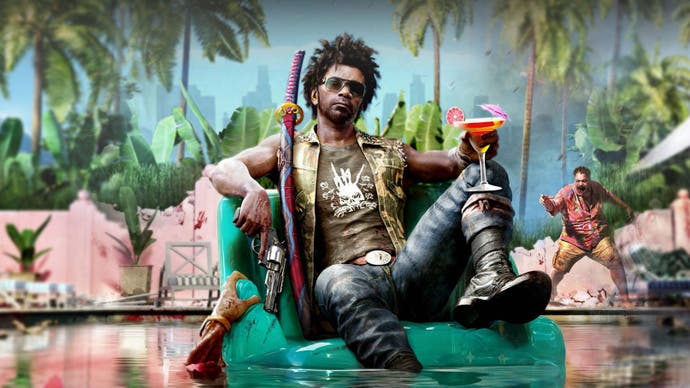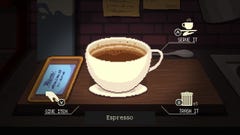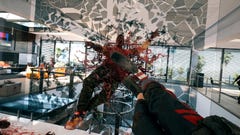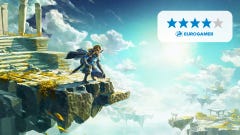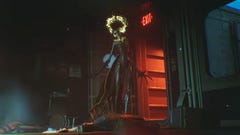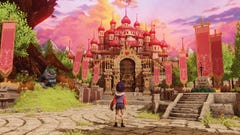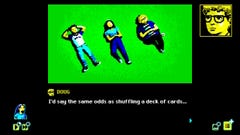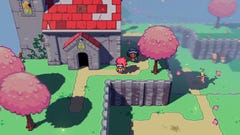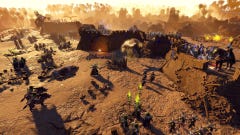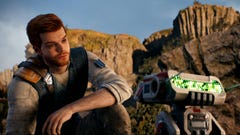Dead Island 2 review - it's still 2011 in Los Angeles
Flesh mince of Bel-Air.
The original 2011 Dead Island and its 2013 sequel Riptide have a special place – if "special" is the right word - in the rancid, suppurating hearts of games journalists above a certain age. Their design and promotion captured an era in gaming that isn't entirely bygone. On the one hand, there was Dead Island's brute-force tearjerker of a CGI trailer, depicting the final moments of a little girl in reverse - a piece of cinematic wizardry and a bid for the eternally coveted status of Blockbuster That Made Me Feel Something. On the other, Riptide's tawdry zombie bikini model pre-order collectible.
Put those two things together and you have vintage triple-A culture in a nutshell: arty aspirations and smirking sleaze, prestige melodrama meets splatterhouse guts and cleavage, all of it orbiting a moderately entertaining co-op action-RPG about punching zombies for randomised weapons which, in hindsight, feels like patient zero for schlooters such as Bungie's Destiny.
Dead Island 2, meanwhile, used to be a byword for vapourware: announced in 2014 with Spec Ops: The Line developer Yager at the helm, eventually farmed out to licensed spin-off powerhouse Sumo Digital, and finally reassigned to Dambusters, developer of the atmospheric but underwhelming Homefront: The Revolution. That's the kind of journey to shelves you expect to leave obvious scars. In practice, Dead Island 2 is a slick and substantial 20+ hour looting game that rarely puts a foot wrong, but also never gets your pulse jumping, and struggles to do anything very intriguing with its not-unintriguing setting.
The action has shifted from Papua New Guinea to the posher bits of Los Angeles (the game insists on calling it "Hell-A" – please don't encourage it) with a new playable cast of blinged-up roughnecks who offer a couple of signature class traits apiece and a snarky quip-to-self for every last thing you see and do. You're here to escape, naturally, but along the way you'll rescue a bratty Brit actress from her Beverly Hills retreat, take the sewers to the beachfront and ultimately, become embroiled in various mad science schemes.
The scenery is baroque, closer to Homefront: The Revolution than Dead Island in the sheer splendour of its clutter, with hotel corridors full of discarded belongings and storm drains plastered with offal and graffiti. The world is no longer open - after all, how could you do an open world LA game without driveable cars? - but a collection of separately loading districts made up of wide routes between NPC safe zones and branching or circular mission areas, such as building sites and police stations.
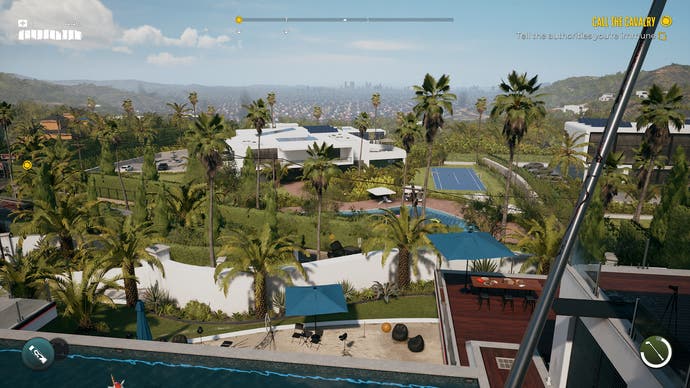
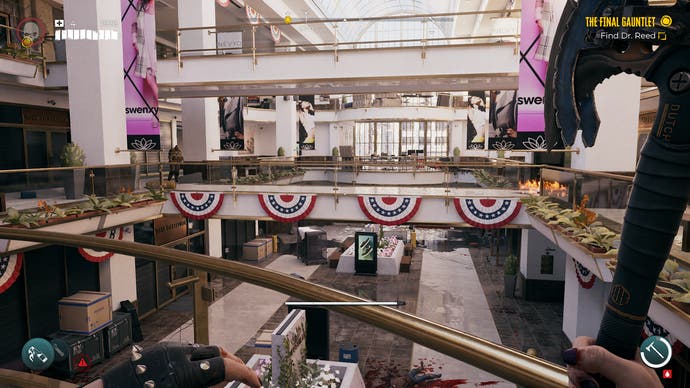
The rhythms of play are broadly as they were in 2011, however: hack zombies apart and hoard those crafting materials. There's the same upfront emphasis on melee – you won't get your hands on a gun till a few hours in, and you'll seldom have enough ammo to rely on them – and the zombies themselves are a familiar spread: classic Romero-brand shamblers and the speedy 28 Days Later strain, plus midbosses such as bloated bile-pukers and ogres with cleft torsos, on loan from Left 4 Dead and Resident Evil respectively.
Dead Island 2's greatest design feat is how smoothly it blends the immediately more-ish act of massacring the above with the supporting RPG systems. The zombies have levels, like you, and a gap of two or more levels can turn any undead extra into a one-hit-killer - helpfully designated by a skull indicator. There are also elementally themed zombies who are scare-quotes IMMUNE to the kind of damage they deal. But it seldom feels like you're just punching numbers out of bodies: regardless of their level, enemies stagger, dismember, fly back believably, their putrid hulks made up of gratifying layers of skin and bone that peel away like giftwrap, with critical hits triggering a burst of slow-mo. The melee weapons have distinct cadences, managed by a simple recharging stamina system. Ambush a Walker with a pair of crescent moon knuckledusters and grin as it disintegrates squelchily under accelerating speedbag combos. Smack one with a razor-wrapped sledgehammer and cackle as it takes off like a firework full of giblets.
There are throwable "curveball" items to help with crowd control - timed explosives, shuriken, horde-luring vials of meat, with enemies mostly showing up in gangs of five or more. There are also countless terrain traps to seize upon, from the obligatory exploding oil drums to jerry cans of water you can lob at circuit boxes to form electric puddles. But the real thrill is simply herding attackers together so as to swat the whole gang off-screen with a single horizontal swing. It's cutting the grass in Zelda, but gristlier.
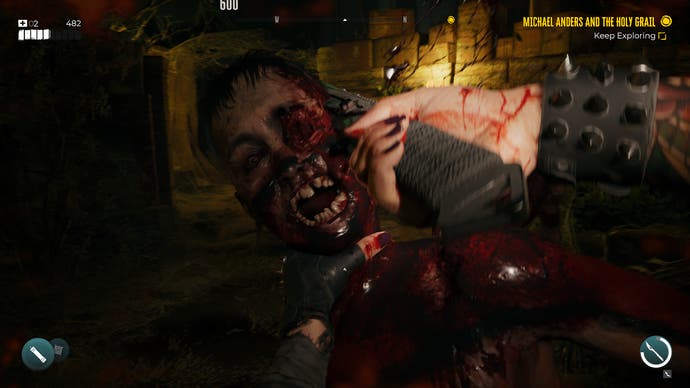
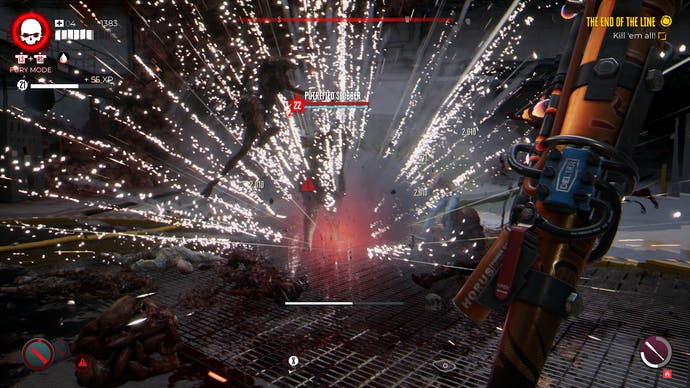
Still, it does get repetitive, not just because the game is over-fond of certain enemy types, like ground-pounding body builders, but also because it's yet another game held together by a progression system. This isn't really an exercise in playing with the undead like Capcom's Dead Rising, where you'd pop mascot heads on corpses and batter them with parasols for the sake of a cool picture. The idea is to optimise a build so as to stay one step ahead of the difficulty arc formed by levelling, and while the progression system design is fairly well-wrought, that very robustness threatened to put me to sleep.
Customisation consists of finding mods to plug into weapons of different rarities, and equipping passively unlocked skill cards that, for example, replenish stamina and health when you dodge. The weapons are essentially distinguished by damage, speed, reach and how much they knock attackers back, with mods applying status effects such as fire and bleed. The skill card system is bland to begin with – I immediately forgot what I had equipped, with the game periodically nudging me to check out a new card. But it gradually becomes more decisive as you approach the endgame and start thinking about all the side missions you've missed (think "rescue this guy from that previously explored area"). Later on, you unlock a chargeable rage mode for last-ditch comebacks, together with more adventurous, risk-reward Autophage cards, which grant you stackable buffs and debuffs. While I haven't spent much time with the three-player co-op, it feels like there's decent scope here for building diverse parties – one player firing electric Uzi rounds to paralyse the mob, so another has time to wind up their incendiary claymore.
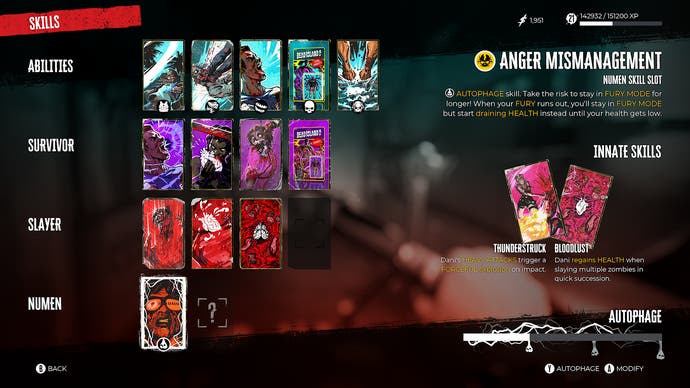
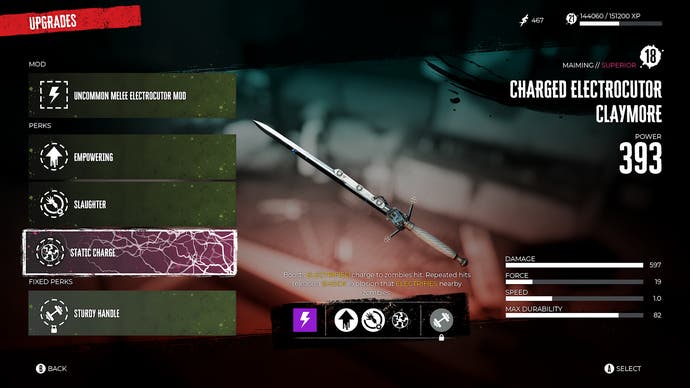
It all hangs together well enough. But it's nothing you haven't seen in other RPG-adjacent games, and there are the usual drawbacks for any experience based on looting and upgrading. Pretty much every side chamber, from janitor closets to portaloos, harbours a pinch of scrap for the DIY-minded zombie-botherer. These resources may spur exploration but they also stop you seeing the world, because you're too busy harvesting it. Entering a room, you rub the camera over the contours as though your character were a hoover with a missing nozzle, spamming the collect button irritably to sponge up the raw materials lodged in among the immaculate, Teflon-sealed detritus. You barely register the differences between specific flavours of crafting material: as long as you keep brainlessly foraging, you'll eventually have enough of whatever you need for any modded weapon you might choose to assemble.
Dead Island 2 is far from the only game that bogs itself down like this, but it irks me more than usual here because the setting deserves better. Tear your eyes from all those piecemeal resources, and the game's Los Angeles is both a moderately engrossing social study and a playground that compares at times to Looking Glass and Arkane's immersive sims. The game's finest hour comes early on in the shape of a sprawling influencer mansion, its sloping tiers housing ornamental swimming pools, cheesy desert island film sets, underground bowling alleys, neon wine cellars, innumerable room-sized sofas and lashings of vapid, NFT-grade wall art.
It's a monument to crassness that demands to be smashed and pillaged, but also, a storied environment redolent of Prey and Bioshock. For all its air of parody, it's a place to spend real time in, soaking up the preposterous lives once led within these glass walls, and a quietly enjoyable tactical sandbox with a choice of routes between levels. Needless to say, there's a side mission here that consists of livestreaming your own carnage, hacking up those zombified influencers or booting them off the mansion roof as the audience demands.
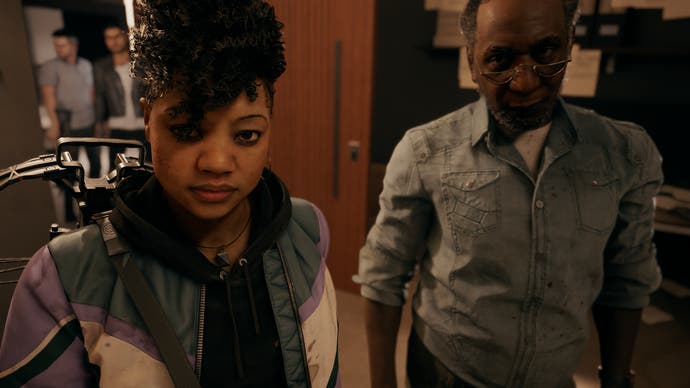
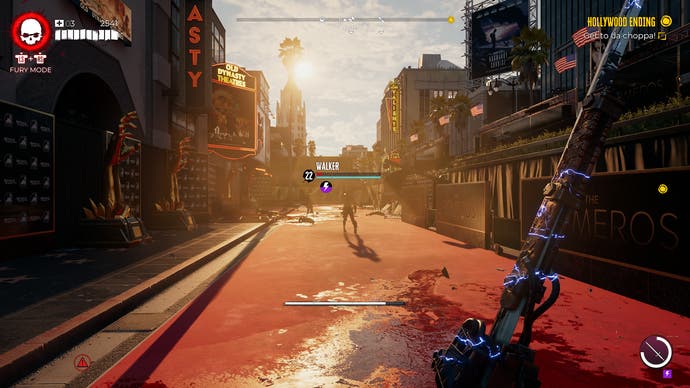
That touch of Looking Glass is everywhere in Dead Island 2, even as the lumbering player movement keeps Homefront: The Revolution in the forefront of your mind (you can haul yourself onto a car to escape the mob, but you won't be parkouring about as in Dead Island's younger sister Dying Light). There's the inevitable trip to a Hollywood movie studio, where you'll activate stage SFX to barbecue rotting extras in racist B-movie make-up. There are gutted police stations full of tripwire traps, to be circled around and dismantled for ammo, and the occasional, CSI-style beat where you poke about for a door code or somebody's dropped keys. There are also some tedious puzzles involving turning valves to repressurise a door mechanism, but they don't recur often enough to be annoying.
Everything's held together by a familiar but compelling vision of LA as a concentration of extreme wealth and poverty refracted through the sordid prisms of the movie industry. It's a fine setting for an Arkane-style game, a place of cruelty, possibility and excess. But all that gradually disappears beneath the looting and upgrading. It feels like the developers only wanted the emergent im-simminess of it all to go so far: while some choice weapons are found by poking around the crevices, many others are deflatingly tucked behind doors that require you to buy a fuse from somebody in one of the game's NPC hub spaces. At times like these, Dead Island 2's world becomes something to unlock rather than explore.
If you've somehow yet to play an undead-themed action-RPG or you have an appropriately on-brand mindless hunger for the subgenre, Dead Island 2 might be worth your while. It's certainly got the zombie disassembly part down pat. If you are neither of those things, all the sturdy design and flying organs in the world can't hide the shortage of lingering excitement here. Dead Island 2 isn't a bad game, but it does feel superfluous, which is a sad thing to conclude about a project that's been in development for almost a decade. Still, at least they spared us the zombie booby merchandise this time.
